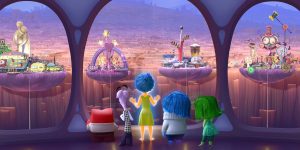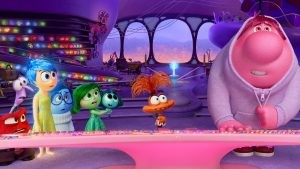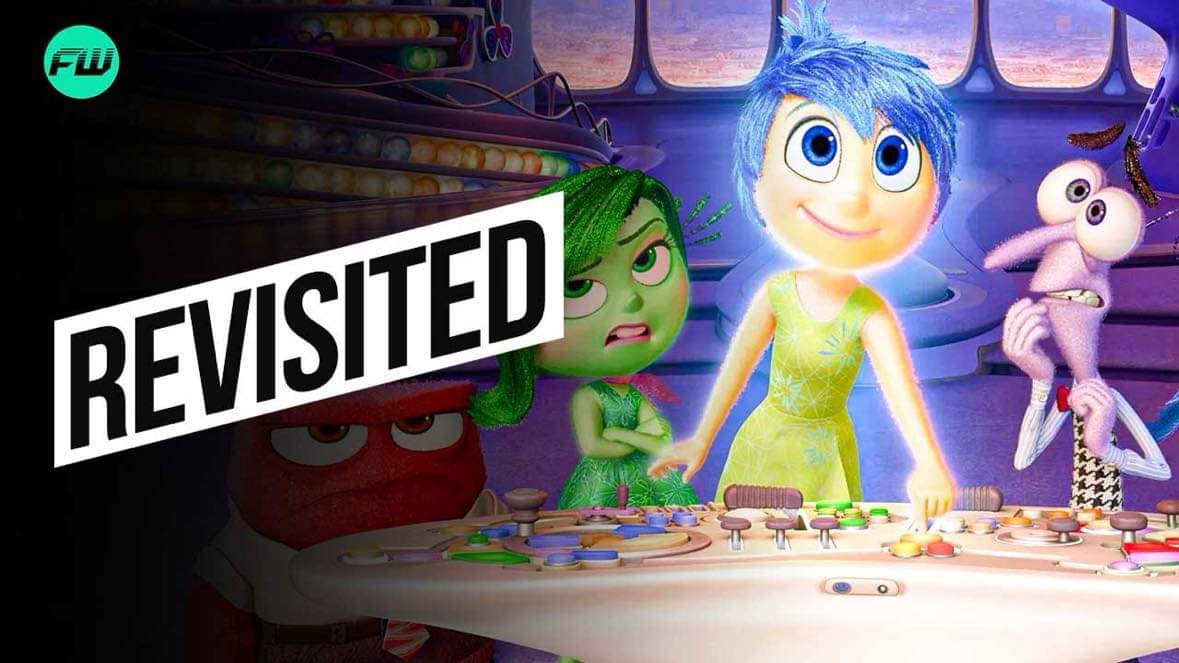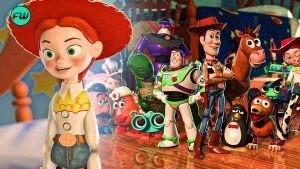With Inside Out 2 hitting theaters soon, I figured that now would be as good a time as any to look back at the 2015 original nearly a decade later. When Inside Out first released, Pixar was in arguably the studio’s first slump period. After 15 years of universal acclaim and box office dominance from 1995’s Toy Story to 2010’s Toy Story 3, the studio put out the critically reviled Cars 2 and the middlingly received Brave and Monsters University all in a row.
All three films still made money and Brave even took home the Best Animated Feature Oscar that year, but it nevertheless felt like Pixar had lost some of that original spark. But then came Inside Out; a completely original story from Pixar veteran Pete Docter, who had previously helmed Monsters Inc. and Up that took the studio’s “What if x had feelings?” formula to its logical extreme by giving them to literal feelings.
Inside Out grossed over $858 million worldwide during its theatrical run and was universally praised by critics and audiences alike, frequenting “Best of the 2010s” lists, sweeping that year’s Annie Awards with 10 wins across 14 nominations, and even turning “core memory” into a cultural touchstone in and of itself amongst Millennials and Generation Z. But after all these years and a hotly-anticipated sequel just around the corner, does the original still hold up? In my opinion, it gets better with every single viewing. Let’s discuss.
Inside Out Plot

Our story begins with Joy, the literal personification of happiness played by a perfectly cast Amy Poehler, inside the mind of a young girl named Riley, where she is soon joined by four other emotions: Disgust, Anger, Fear, and Sadness. The emotions’ job is to take care of Riley and make sure she’s living the best life she possibly can and so far things are running pretty smoothly. Until Riley is forced to move from her beloved home in Minnesota to San Francisco, California.
Things almost immediately start going wrong. The new house is a mess, the moving van with Riley’s stuff won’t arrive for days, but through it all Joy is determined to keep Riley happy. But even that quickly unravels after Riley breaks down crying on the first day of school, creating her first sad core memory. And in the process of trying to stop said memory, Joy accidentally sends her, Sadness, and Riley’s core memories out of Headquarters and into the deep recesses of Riley’s mind.
With all of her core memories and two of her emotions out of commission, Riley grows distant from her family and friends; losing key facets of her personality, represented in the mindscape as islands, to this despondence. And with each island that Riley loses, Joy and Sadness lose a potential path back to Headquarters. All of this comes to a head when, in a desperate attempt to create new happy memories, Anger puts the idea in Riley’s head to run away from home.
Joy and Sadness try and use a recall tube to get back and stop her, but Joy leaves Sadness behind for fear of her turning Riley’s core memories sad, only to end up falling into a memory dump alongside Riley’s imaginary friend Bing Bong who had been helping Joy and Sadness on their journey. At their lowest point, Joy and Bing Bong find the latter’s old rocket and are able to use it to make it back to the surface; though Bing Bong ends up sacrificing himself in the process.
Joy and Sadness finally make it back to Headquarters as Riley has gone completely numb to emotion; only for Sadness to snap her out of it. She rushes home, breaks down to her parents about how she’s feeling, and the family hugs it out as Riley’s personality begins to restore itself; ready to take on a new, more complex phase of her life.
Why It Works

All of Pixar’s best films strike a balance between joy and sadness, so it probably shouldn’t be a surprise that their best one to date literally features Joy and Sadness as the two leads. The world of Riley’s mind is vibrant, colorful, and filled to bursting with creative design elements that feel both unique and whimsical yet universal to how we process thoughts and emotions as humans, at least in an abstract sense. Even the character’s designs help reflect this, with each of the main five perfectly embodying their respective emotion through everything from shape to color to light to body language.
And the film is also very funny when it needs to be. Joy and Sadness make a pitch-perfect comedic duo, Lewis Black as Anger is almost as perfect a casting as Amy Poehler as Joy and his hysterical line delivery reflects that, Richard Kind as Bing Bong is a lot of fun, and there’s tons of great individual gags like the recurring “Triple Dent Gum” bit, the facts and opinions getting mixed up, or the trippy visuals during the abstract thought sequence.
But what makes Inside Out so special are, fittingly enough, the emotional moments. The entire film is built on the idea that Sadness, both the character and the emotion itself, are ultimately worth having around. It’s necessary and healthy to feel sad and the film’s biggest emotional moments reflect this theme.
The way Sadness allows Bing Bong to feel loss, how Joy learns that the happy celebration at the twisty tree only happened because Riley was sad about missing the winning shot, Bing Bong’s sacrifice that never fails to turn me into a sobbing wreck, or how Riley is snapped out of her numbness not by a sudden influx of happiness, but by being honest about how sad she is. This particular message is extremely rare in most media, especially works aimed at kids, so to see it handled so well here is refreshing and honestly cathartic.
In Conclusion

Pixar produced plenty of great works before Inside Out and has produced many great works after it. And I’m very excited to see how they expand the emotional journey into adolescence with Inside Out 2. Frankly, it’s something I’ve been wanting to see the studio tackle since we saw the puberty button at the end of the original film. But I still think there’s something to that original film that can probably never be fully replicated.
The parallel journeys of Riley and her emotions, the way Michael Giacchino’s score and main theme reflect both whimsy and melancholy simultaneously, how both worlds lose more and more color as Riley loses her emotional connection only to regain that color once she gets it back, the world design, the characters, the heart, the humor. There are very few films that I would consider truly perfect, but I think Inside Out is one of them. Which is why it’s also Pixar’s best film to date.
Follow us on Facebook, Twitter, Instagram, and YouTube for more entertainment coverage






